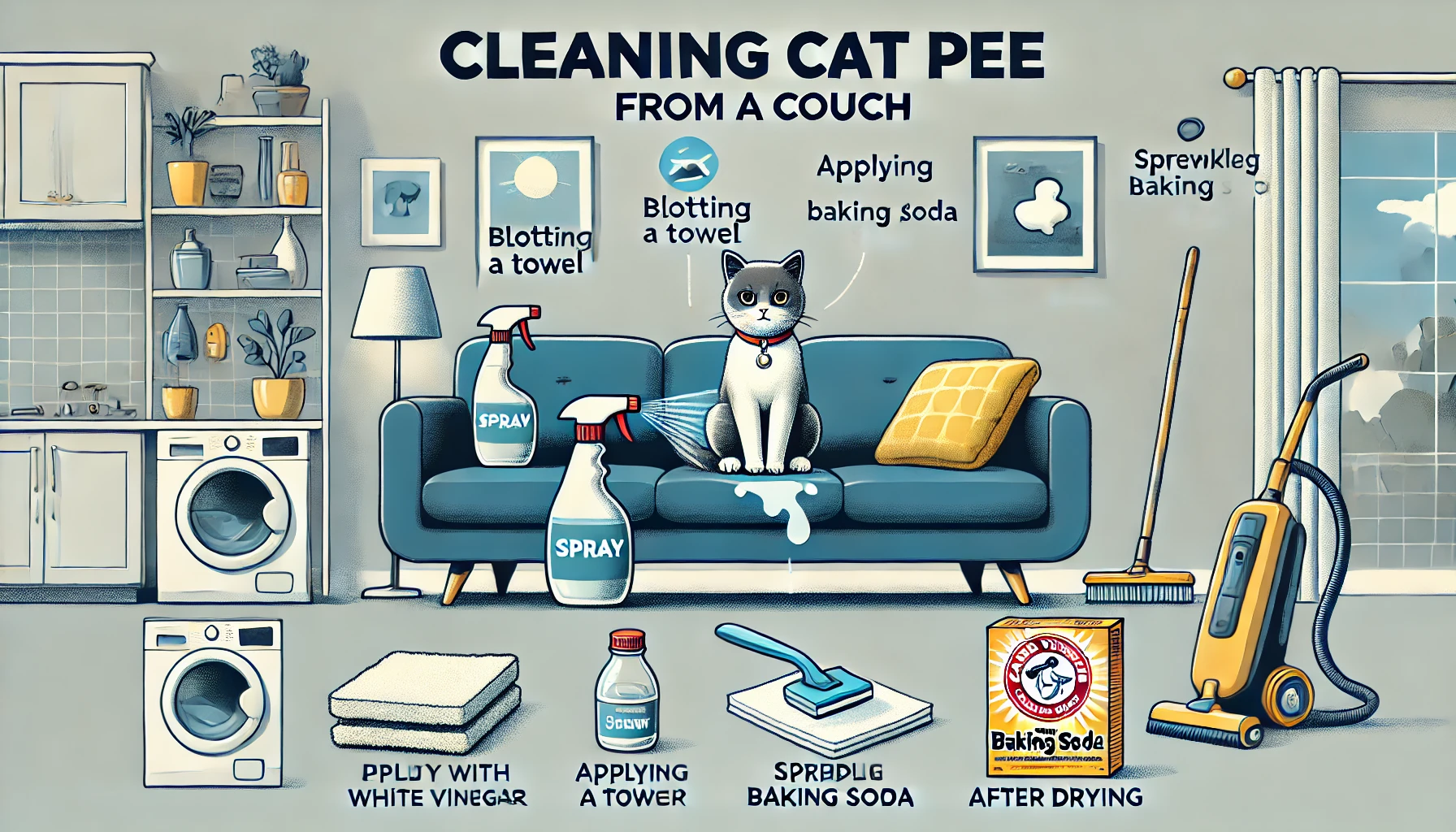If you’re a cat owner, you know accidents can happen, and finding cat pee on the couch is a scenario many people dread. Beyond the unpleasant odor, cat urine can soak into couch materials and be challenging to clean. In this article, we’ll explore practical ways to remove cat pee from a couch, balancing the various cleaning methods, understanding their tradeoffs, and addressing everyday challenges. Whether your couch is fabric, leather, or microfiber, these strategies aim to ensure your couch returns to a fresh and inviting state.
Why Cat Pee Removal Requires Special Care
Cat urine contains strong-smelling compounds, including ammonia and pheromones, which can become more pungent. This unique composition means that simply dabbing away the wetness often isn’t enough to eliminate the odor. Cats may return to the spot if they detect traces of their urine, making thorough cleaning essential.
Step 1: Act Quickly to Minimize Damage
The sooner you address a cat urine stain, the better. Fresh stains are easier to treat than dried ones, as the urine hasn’t yet fully set into the couch material. To start:
- Blot the Area: Use paper towels or a clean cloth to blot the urine gently, absorbing as much as possible. Avoid rubbing, which can push the urine further into the fabric or upholstery.
- Apply Cold Water: Lightly dampen the area with cold water and continue blotting. Cold water helps dilute the urine without setting the stain, which hot water might do.
Step 2: Choose the Right Cleaning Solution
The cleaning method you choose will vary depending on your couch material and your preferred cleaning approach. Here’s a look at some standard options and their tradeoffs:
Vinegar and Baking Soda
Using vinegar and baking soda is a natural, cost-effective way to tackle cat urine odors.
- Pros: These pantry items are readily available and safe for most materials. Vinegar neutralizes the ammonia in cat urine while baking soda absorbs odors.
- Cons: The smell of vinegar can linger, and this method may need to be repeated to eliminate strong odors.
To use:
- Mix equal parts white vinegar and water in a spray bottle.
- Spray the area generously and let it sit for 5–10 minutes.
- Blot the area to absorb excess moisture.
- Sprinkle baking soda over the damp area, let it dry, and vacuum it up.
Enzyme-Based Cleaners
Enzyme cleaners are precisely planned to break down organic stains and odors, making them highly effective for pet urine.
- Pros: These cleaners target and break down odor-causing bacteria. Enzyme cleaners are highly effective for fabrics and are often recommended for stubborn pet odors.
- Cons: Enzyme cleaners can be more expensive, and it’s essential to follow manufacturer instructions closely to ensure effectiveness.
To use:
- Apply the cleaner according to instructions and allow it to sit, giving the enzymes time to work.
- Blot or rinse the area as needed.
Hydrogen Peroxide and Dish Soap
A combination of hydrogen peroxide and dish soap can be effective in lifting stains and neutralizing odors.
- Pros: Hydrogen peroxide is strong on stains, and the dish soap helps lift residue.
- Cons: Hydrogen peroxide can bleach certain fabrics, so testing it on an inconspicuous area first is essential.
To use:
- Mix 1 cup of hydrogen peroxide, 1 tablespoon of dish soap, and 1 tablespoon of baking soda.
- Apply to the stained area and let it sit for 10–15 minutes.
- Blot or rinse the area, then pat it dry with a clean cloth.
Step 3: Consider Couch Material
Not all methods are suitable for every couch material. Here’s a breakdown of what to keep in mind:
- Fabric Couches: Most methods work well on fabric, but using an enzyme cleaner or vinegar and baking soda is typically safest.
- Leather Couches: Avoid using water, as it can damage leather. Instead, use a leather cleaner or a mix of equal parts vinegar and water, which are applied sparingly.
- Microfiber Couches: Vinegar and enzyme cleaners are safe for microfiber, but be cautious with hydrogen peroxide, as it may discolor certain types of microfiber.
Step 4: Repeat If Necessary
Deep stains and odors may require repeated treatments. For stubborn odors, try multiple applications of your chosen method. Enzyme cleaners, in particular, may take several treatments to eliminate odors from deeper layers of fabric entirely.
Additional Tips and Considerations
- Prevention: If your cat frequently urinates on the couch, it may be because of stress, territorial marking, or health issues. Addressing these underlying factors can prevent future incidents.
- Drying Thoroughly: Moisture can lead to mold or mildew, so ensure the treated area is thoroughly dried. Use a fan or place the cushion in a sunny spot if possible.
- Impact of Strong Scents: While products like vinegar are effective, their powerful scent may be unappealing to some. If you’re sensitive to odors, enzyme cleaners are often less pungent.
Conclusion:
Removing cat urine from a couch involves a careful balance between effectiveness and material safety. Natural methods like vinegar and baking soda are eco-friendly and budget-friendly but may require more effort. Enzyme cleaners, though more costly, offer a powerful solution for deeply embedded odors. Each method presents unique tradeoffs, and your choice will depend on factors like couch material, budget, and time available for cleaning.
Cat urine accidents can frustrate you, but with quick action and the right cleaning approach, it’s possible to restore your couch to its original, fresh condition. By understanding your couch’s material and selecting the best-suited cleaning method, you can remove cat pee effectively and ensure your furniture remains inviting for everyone, including your feline friend.

Hi, I’m Sondip,
I’m a writer who loves to help people solve their problems. I write about small animals like mice and other small animals and even pests.

